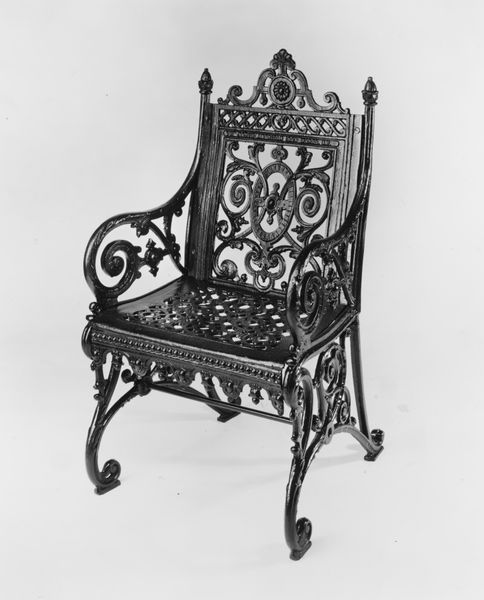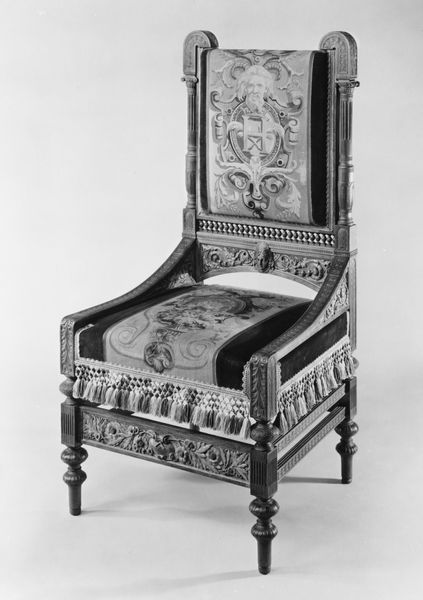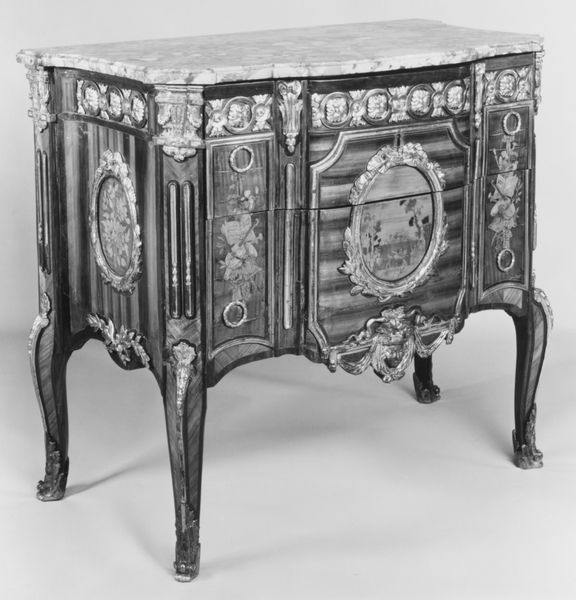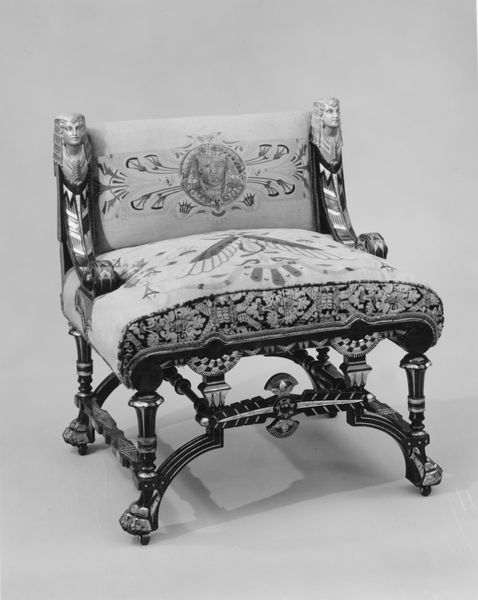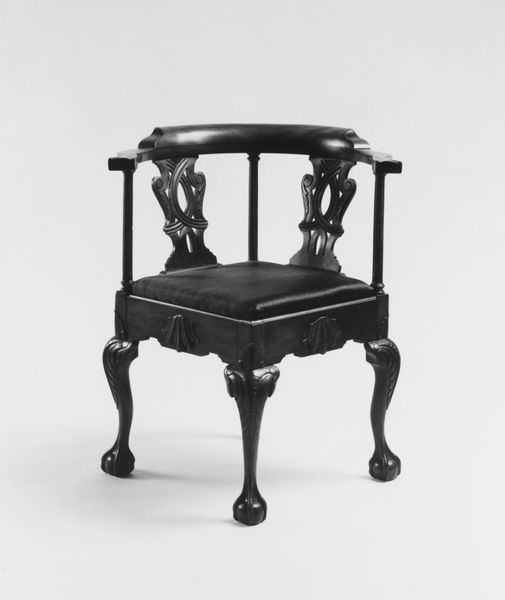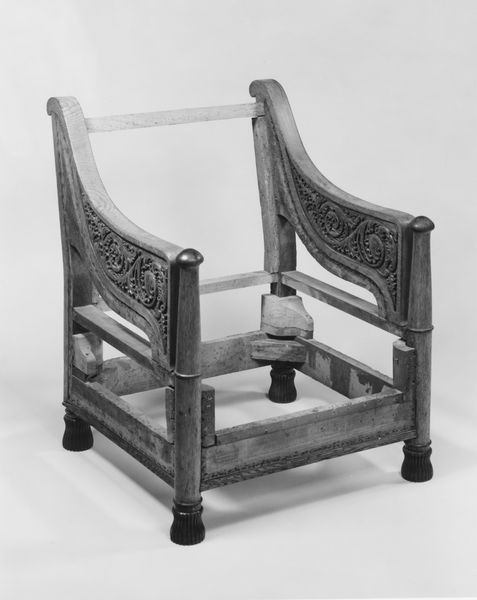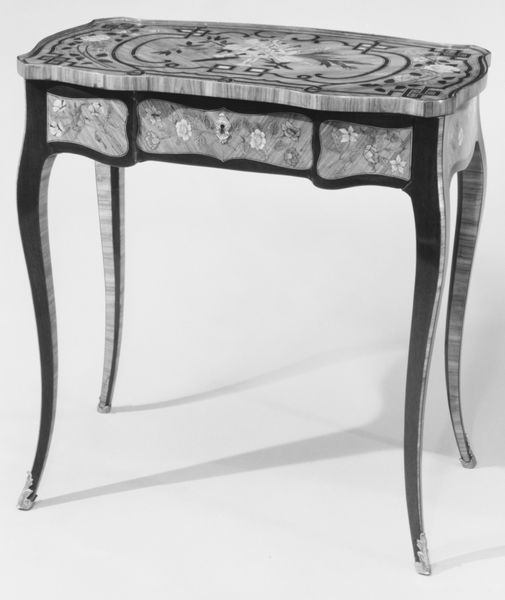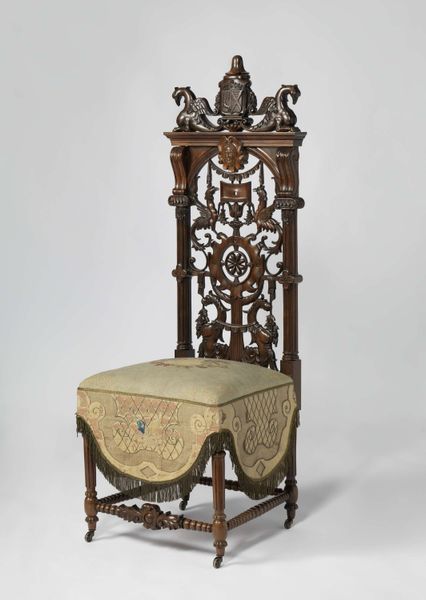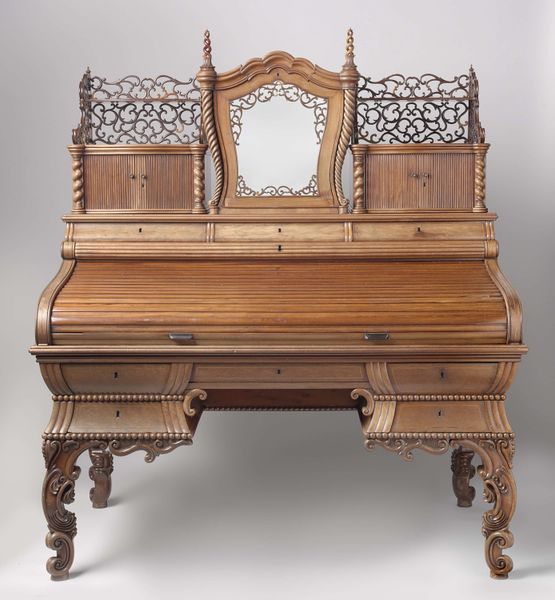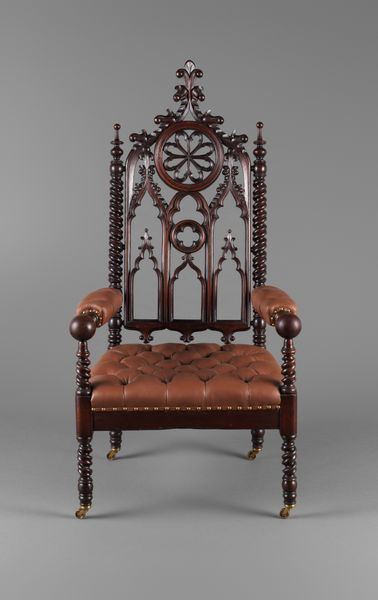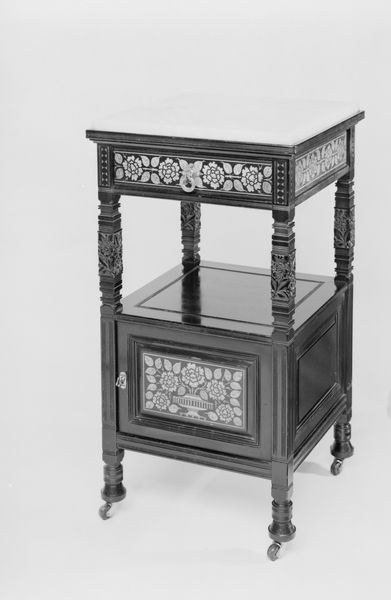
metal, sculpture
#
metal
#
arts-&-crafts-movement
#
sculpture
#
form
#
sculpture
#
united-states
#
decorative-art
Dimensions: 38 1/2 x 33 1/4 x 19 in. (97.8 x 84.5 x 48.3 cm)
Copyright: Public Domain
Curator: Right, so here we have “Bench,” created between 1877 and 1900, and designed by Peter Timmes, an artist whose name doesn’t exactly leap to mind, does it? It's American, made of cast iron, firmly within the Arts and Crafts movement. Editor: It's so ornate! Intricate even, yet it strikes me as rather…melancholy. All that beautiful swirling metalwork, almost like frozen vines, but devoid of any joyful vitality, at least at first glance. Curator: Melancholy in iron – I love that. It's undeniably beautiful though, isn't it? Consider those complex, flowing patterns; how do you see them relating to the Arts and Crafts philosophy? Editor: I suppose the emphasis on craftsmanship is there, writ large! Every single curve meticulously planned and executed. There's a definite appreciation for organic form rendered in an extremely precise, industrial material. A contrast there. I notice a phrase embedded in the pattern: "PETER TIMMES SCULPTOR. N.Y.". The bench, essentially an object, is proudly identified with a unique individual, which speaks to me about what this artistic movement was trying to achieve. Curator: Precisely. The very nature of cast iron suggests mass production, doesn't it? But here it's elevated to this...almost poetic object through design. And it's interesting you say "organic forms", I do see the naturalism represented through those arabesque and symmetrical botanical scrolls that make it so incredibly interesting to observe, and from whatever angle, really. Do you find any emotional content within the piece itself? Editor: Definitely. There is a somber and static element, but that also lends the piece strength, I'd say. And that intricate ornamentation can seem constricting, can't it? Perhaps it reveals anxieties surrounding industrialization at the turn of the century and the transition between decorative refinement and austere functionality, perhaps not. Either way it asks: can beauty be captured in everyday existence, or is life really just the space that is lived between these objects that stand around the domestic stage? Curator: That's fascinating, especially in contrast with modern industrialism today. The more things change, the more they stay the same...in art, at least. A thoughtful, provocative bit of industrial design. Thanks. Editor: It has been a pleasure delving into the history and artistry imbued in this bench.
Comments
No comments
Be the first to comment and join the conversation on the ultimate creative platform.
